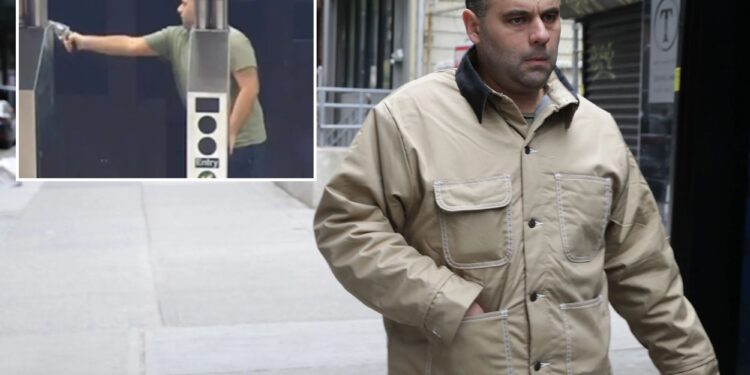
Another week, another violent incident in the subway — this time, a “vigilante” firing shots across a subway platform to deter a mugger.
Subway chief Richard Davey calls the shooting “outrageous, reckless and unacceptable.”
But it will keep happening until the NYPD — controlled by Mayor Adams — gets subway crime back to acceptable levels.
A vagrant, Matthew Roesch, held the emergency exit gate open for a woman to walk through Tuesday evening, expecting her to pay him a dollar for the “free” fare.
When she didn’t, he allegedly followed her, threatened her and started to grab her bag.
That’s when commuter John Rote yelled at the robber, “Get away from her!” and then opened fire.
He was arrested at work Wednesday, having disposed of his gun.
There’s no disputing it’s reckless to carry a gun onto the subway (Rote’s lawyer claims he bought it legally, but that doesn’t mean he can carry it legally, and he was charged with criminal possession of a firearm) and it’s reckless to shoot in the direction of a crowd.
And it was further irresponsible for Rote to leave the scene instead of presenting himself to police.
But: There’s also no disputing that once again, New York City has failed to keep people safe in a confined subway space, leaving Rote with no good options. So he chose a bad one.
Start with the initial problem: Roesch holding the emergency gate open for people to walk through and pay him a buck instead of the Metropolitan Transportation Authority $2.90.
Roesch is known for such fare theft.
“This gentleman has some history of swiping in the system,” transit borough Manhattan Inspector Steven Hill of the NYPD told The Post. “He’s been arrested before.”
This behavior is corrosive. First, it costs the MTA hundreds of millions of dollars a year.
Second, it’s menacing. Particularly at a station with an isolated entrance like 49th Street, a fare-swipe “seller” makes it clear he’d really rather you not walk through a turnstile and pay your fare to the MTA.
If you defy his wish, you’re then stuck with him on the narrow platform.
So why has Adams’ NYPD allowed Roesch to repeatedly get away with this behavior?
If he’s “known” to subway police, why is he in the subway?
Even last week, after this mugging attempt, he was arrested and released.
Does this turnstile justice show the state’s criminal-justice laws still aren’t fixed, after poorly thought-out 2019 “reforms”?
If so, Adams should say so, often.
Once Roesch allegedly began menacing and threatening his female victim, what should a bystander like Rote do?
Rote could just leave, of course, and face no risk — leaving yet another woman to be brutally attacked on the subway, following last month’s near-fatal pushing of a commuter, also in Midtown, and an attack in May, yes, also in supposedly safe Midtown, that paralyzed a woman.
He could intervene physically without resorting to a gun.
Great idea when the video of Ryan Carson’s October murder on a Brooklyn street shows that an assailant can kill you in an instant.
Or you could kill him and end up like Daniel Penny, facing long prison time.
Add the risk of a train barreling through at any moment as you tussle.
He could call 911 — fumbling on the phone from an underground platform that may or may not have service to tell a dispatcher a complex location and wait three minutes, five minutes, seven minutes for police to show up — meanwhile further agitating a violent criminal.
That is still the wisest course — better than shooting.
But let’s be clear about the far bigger failure: New York City’s failure to keep people safe on the subway.
Through September, violent felonies in transit are a quarter higher than they were in 2019, before the state implemented its more lenient criminal-justice laws.
Just last week, a man was stabbed with a screwdriver, apparently by a stranger, on a Columbus Circle train — another busy Midtown station whose crowds supposedly create safety in numbers.
Add the “small” problems — random shouting and mumbling, aggressive panhandling, drug use, loud music and smoking — that make it appear a big crime might break out at any moment, and no wonder people are scared.
Scared people don’t make good choices.
Nicole Gelinas is a contributing editor to the Manhattan Institute’s City Journal.



























